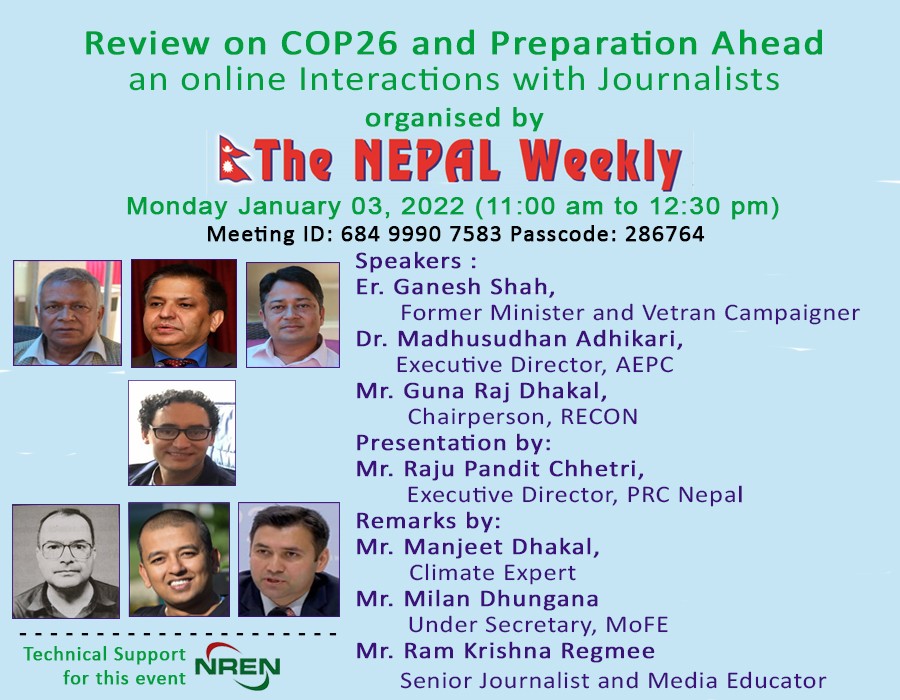 The Nepal Weekly
The Nepal Weekly  March 8, 2022
March 8, 2022
Russia’s invasion of Ukraine and the financial sanctions imposed on Moscow in response are proof that the triumphant globalization campaign that began more than 30 years ago has reached a dead end.
Fallout from the fighting in Ukraine will take a meaningful bite out of the global economic recovery this year, with the greatest impact in Europe, economists warn. A spike in oil prices to more than $110 per barrel and renewed supply chain disruptions — including fresh headaches for the auto industry — also are likely to aggravate U.S. inflation, already at a 40-year high.
But the war’s long-term consequences could be more profound. Even before Russian President Vladimir Putin sent tanks and missiles hurtling toward Ukraine, years of deteriorating U.S.-China relations and failed global trade talks had stalled the tighter integration of finance and trade flows that had been anticipated during globalization’s heyday.
What comes next is unlikely to mirror the Cold War’s distinct blocs. Even as the global economic order fractures, no rival ideologies compete for supremacy. And China’s harsh authoritarian turn under President Xi Jinping co-exists with extensive commercial ties to the United States, Europe and Japan. But governments, corporations and investors all are adjusting to a new reality.
On Friday, Russia’s isolation deepened as the country’s communications regulator blocked access to Facebook, one of the few sources of information that the government already did not control, saying it had discriminated against Russia media.
In Washington, top Democrats and Republicans have begun demanding that the United States stop importing oil from Russia, a move that would intensify Moscow’s financial plight if European nations followed suit. Meanwhile, the International Monetary Fund warned Saturday that the war and rapidly accumulating sanctions on Russia would “have a severe impact on the global economy.”
“This event does seem to be one that is a game changer and will be with us for a very long time,” Federal Reserve Chair Jerome H. Powell told Congress recently.
Russia’s financial exile caps more than a decade of erosion in globalization, beginning with the 2008 financial crisis and continuing through the rise of Xi in 2012, the U.S.-China trade war that began in 2018, and diplomats’ repeated failures to agree on trade liberalization. The coronavirus pandemic, which highlighted the risk of ocean-spanning supply lines and restricted international travel, further thinned cross-border links.
Together, Russia and Ukraine account for 3 percent of global output, according to JPMorgan Chase. Putin’s brutal invasion of his neighbor, however, will have broad economic repercussions, economists and government officials said.
Expectations for an enduring era of peace and prosperity were high in the early 1990s. After the Soviet Union ceased to exist in December 1991, Russia embarked on a helter-skelter series of economic reforms, including establishment of the country’s first stock market, and welcomed foreign investors.
China, meanwhile, was also moving along a market-oriented path that relied upon access to foreign technology, capital and executives.
From the outset, many U.S. officials saw a link between political and economic freedom. By 2000, when Congress was debating China’s entry into the World Trade Organization, President Bill Clinton saw trade ties heralding “very profound change,” including in the country’s political system.
Even before the pandemic drove the developing world into deeper poverty, about 70 percent of the world’s countries were experiencing subpar growth, roughly three times the figure in 2008, according to the World Bank. Nondemocratic rule similarly spread across much of the globe.
In 2020, for the first time in more than two decades, global poverty increased, according to World Bank data. Russia’s recession will intensify that trend, including in the Central Asian republics that once were part of the Soviet Union. Remittances from migrant workers from Central Asia who work in Russia make up about 30 percent of the economy in both the Kyrgyz republic and Tajikistan and are almost certain to plummet as Russia plunges into a deep recession and the ruble sinks.
World trade volumes would be nearly twice as high today if they had continued on their 2000-2008 path, according to data from CPB Netherlands Bureau for Economic Policy Analysis, an independent research institute.
Likewise, major cross-border financial flows have virtually stagnated even as the global economy grew about 30 percent larger since 2008. Top banks have $31.1 trillion in foreign exposure today, little more than the $30.4 trillion in early 2008, according to data from the Bank for International Settlements in Basel, Switzerland.
Financial markets that once rose and fell in near lockstep are increasingly going their own way, according to MSCI research. A decade ago, markets in different regions moved together about 80 percent of the time. Today, the correlation is a bit more than 50 percent, reflecting “less of a globalized economy,” according to Peter Zangari, MSCI’s global head of research and product development.
China’s economy, however, is 10 times the size of Russia’s and is far more intertwined with the outside world — making it unlikely that Beijing or its trading partners would seek a complete divorce.
The war’s immediate impact on the U.S. recovery is likely to be limited. Total U.S. two-way trade with Russia and Ukraine last year amounted to $40 billion, and Wall Street banks have less than $15 billion at stake in loans to Russian borrowers.
But there will be collateral damage from the sweeping U.S. and allied sanctions that have slashed most of Russia’s links to global trade and finance. Gas prices in the United States, which now average a nine-year high of $3.84 per gallon, may soon smash $4, according to Capital Economics.
Russia also is a major producer of other commodities, including wheat and industrial metals. The price of palladium, which is used to make catalytic converters, is up more than 60 percent this year for automobiles.

